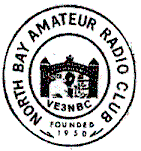2021 Canwarn On-Line Training May 26 - 7 pm
Primary tabs
Radio Amateurs of Canada (RAC), the national association for Amateur Radio in Canada, is pleased to announce that we have now partnered with the Ontario Storm Prediction Centre Team (OSPC) to provide CANWARN Training this spring.
This will be a one-time session for this season, offered through the Zoom online meeting platform.
Date: Wednesday, May 26 Time: 7 pm EDT
To register for the training session please visit the RAC CANWARN webpage at: https://www.rac.ca/emergency-services/canwarn/
CANWARN (CANadian Weather Amateur Radio Network) is a network of volunteer Amateur Radio operators who observe and report both winter and summer severe weather conditions.
Topics covered in the training session will include the basics of thunderstorm formation, the types of damage severe thunderstorms can produce and what to look for in the sky. Winter severe weather will be touched on as well.
The training also provides ways that storm reports can be provided to the OSPC and a number of safety tips to keep storm spotters safe.
Additional information about CANWARN:
Severe storms can occur at any time of the year. Spring and summer thunderstorms can flare up suddenly and race along at speeds in excess of 80 km/h. Large hail, damaging winds, flash floods and tornadoes are all linked to severe thunderstorms. Large-scale fall and winter storms can deliver significant impacts over a broad area. Heavy snow, freezing rain, rain and strong winds can occur with these storms.
CANWARN volunteers are trained to look for clues in the sky as to which spring and summer storms may produce damaging weather. They can also report information like hail size and any damage that has resulted from the passage of a storm.
For fall and winter storms, CANWARN volunteers can report things like occurrences of freezing precipitation and snowfall amounts. These volunteers come from all walks of life: Amateur Radio operators, first responders, government employees and members of the general public with an interest in providing a service to others.
Reports are passed on via Amateur Radio to a net controller at the Environment Canada Weather Centre in Toronto. This information is then passed directly to the forecasters for incorporation into the forecast.
In Ontario, their reports are sent to the Ontario Storm Prediction Centre (OSPC) in Toronto through social media and/or a special email address. These timely reports can help the forecasters better understand the nature of a given storm and help to tailor the messages they send to the public about them.
For more information on the program, please visit the RAC CANWARN webpage at: https://www.rac.ca/emergency-services/canwarn/
Jason Tremblay, VE3JXT
RAC Community Services Officer
